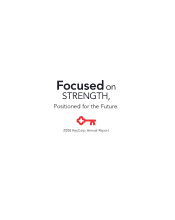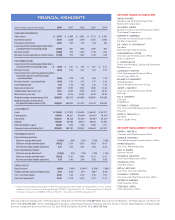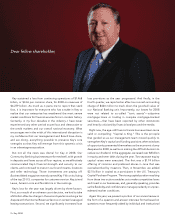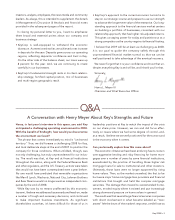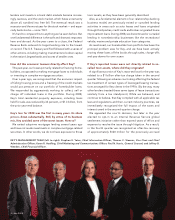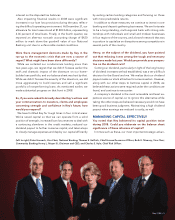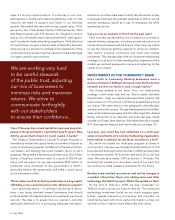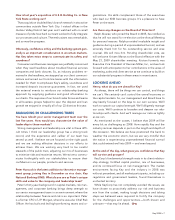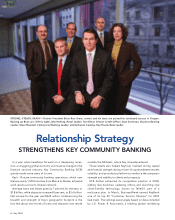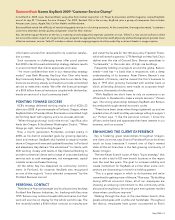KeyBank 2008 Annual Report Download - page 7
Download and view the complete annual report
Please find page 7 of the 2008 KeyBank annual report below. You can navigate through the pages in the report by either clicking on the pages listed below, or by using the keyword search tool below to find specific information within the annual report.
interest on the disputed tax balances.
Also impacting financial results in 2008 were significant
increases in our loan loss provisions during the year, reflect-
ing the difficult operating environment. At December 31, our
allowance for loan losses stood at $1.803 billion, representing
2.36 percent of total loans. Finally, in the fourth quarter, we
reported an after-tax noncash accounting charge of $420
million to mark down the goodwill value of our National
Banking unit due to unfavorable market conditions.
Were there management decisions made by Key in the
run-up to the economic crisis that are now a source of
regret? What might have been done differently?
While we curtailed our condominium lending more than
two years ago, we regret that we didn’t foresee earlier the
swift and dramatic impact of the downturn on our home-
builder loan portfolio, and our balance sheet was hurt by that.
While we didn’t foresee the severity of the downturn, we did
move aggressively to build reserves and sell a significant
portfolio of nonperforming loans. As mentioned earlier, we
made substantial progress on that front in 2008.
So, if you were asked to broadly describe Key’s actions and
your communications to investors, clients and employees
concerning strength and confidence in Key’s future, how
would you respond?
We have fortified Key for tough times in four critical areas:
We’ve raised capital so that we can operate from a solid
position of strength; increased loan loss reserves to deal with
a continuing slowdown in the credit markets; reduced our
dividend payout to further conserve capital; and taken steps
to closely manage expenses and deploy our capital efficiently
by exiting certain lending categories and focusing on those
with more predictable returns.
In addition to those measures, we continue to invest in core
banking and deposit-gathering businesses. We are fortunate
to be a long-standing, multi-regional bank with strong rela-
tionships with individuals and small and midsize businesses
in four regions of the country, and a branch network that was
in position to capitalize on disruptions among competitors in
several parts of the country.
Henry, on the subject of the dividend, you have pointed
out that reducing it was among the tough and necessary
decisions made last year. Would you provide your perspec-
tive on the dividend cuts?
Cutting our dividend, particularly in light of the long history
of dividend increases we had established, was a very difficult
decision for the Board and me. We realize that our dividend
payout made our stock attractive for some investors. However,
along with our other steps to buttress capital in 2008, we
believed these actions were required under the conditions we
faced, and continue to encounter.
A company’s dividend is the most accessible and least ex-
pensive source of capital, so to ignore this alternative while
taking the other steps we believed necessary would not have
been good business judgment. Maintaining a high dividend
payout when earnings are reduced is costly, as well.
MANAGING CAPITAL EFFECTIVELY
You noted that Key bolstered its capital position twice
during 2008. Could you elaborate on the balance sheet
significance of these infusions of capital?
In times such as these, our most important strategic advan-
(left to right) Peter Hancock, Vice Chair, National Banking; Thomas E. Helfrich, Chief Human Resources Officer; Beth E. Mooney, Vice Chair,
Community Banking; Henry L. Meyer III, Chairman and CEO; and Charles S. Hyle, Chief Risk Officer.
Key 2008 • 5

